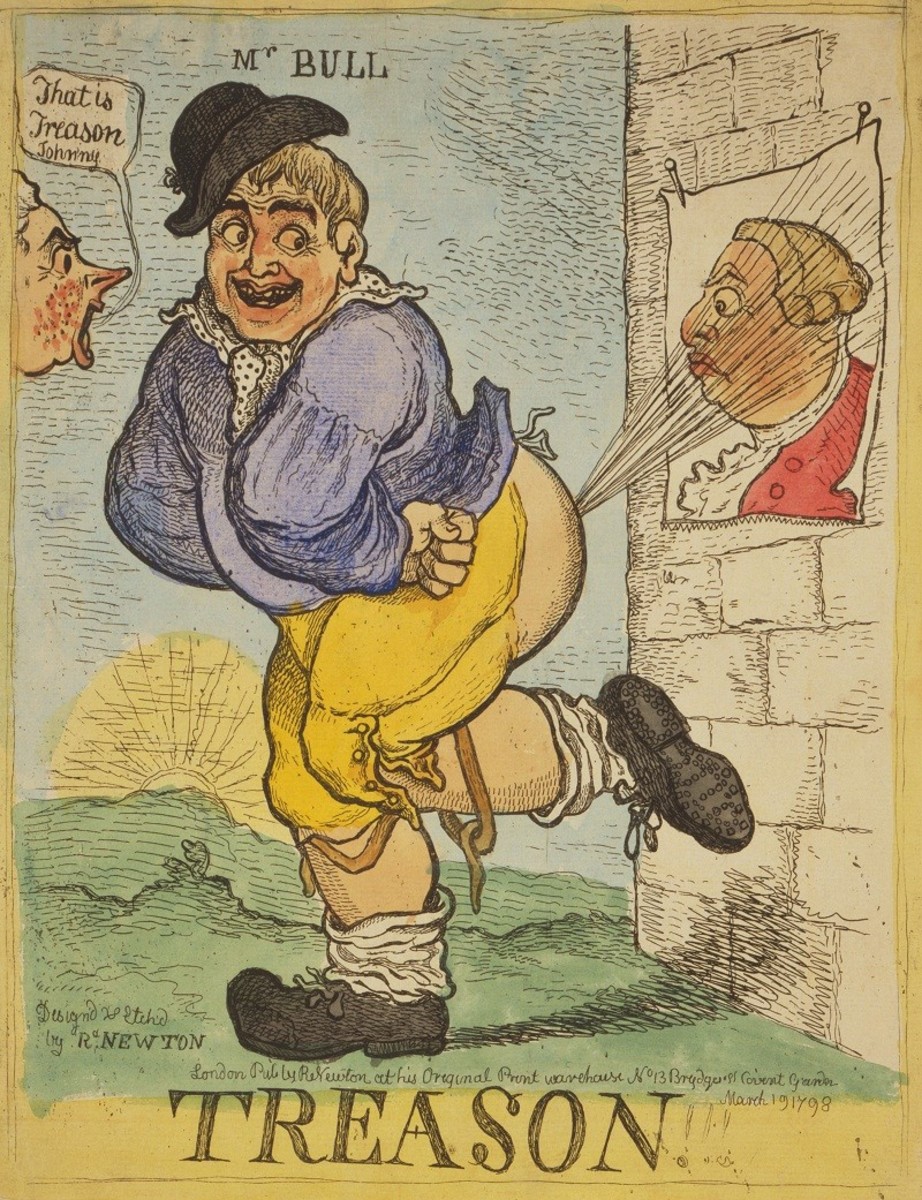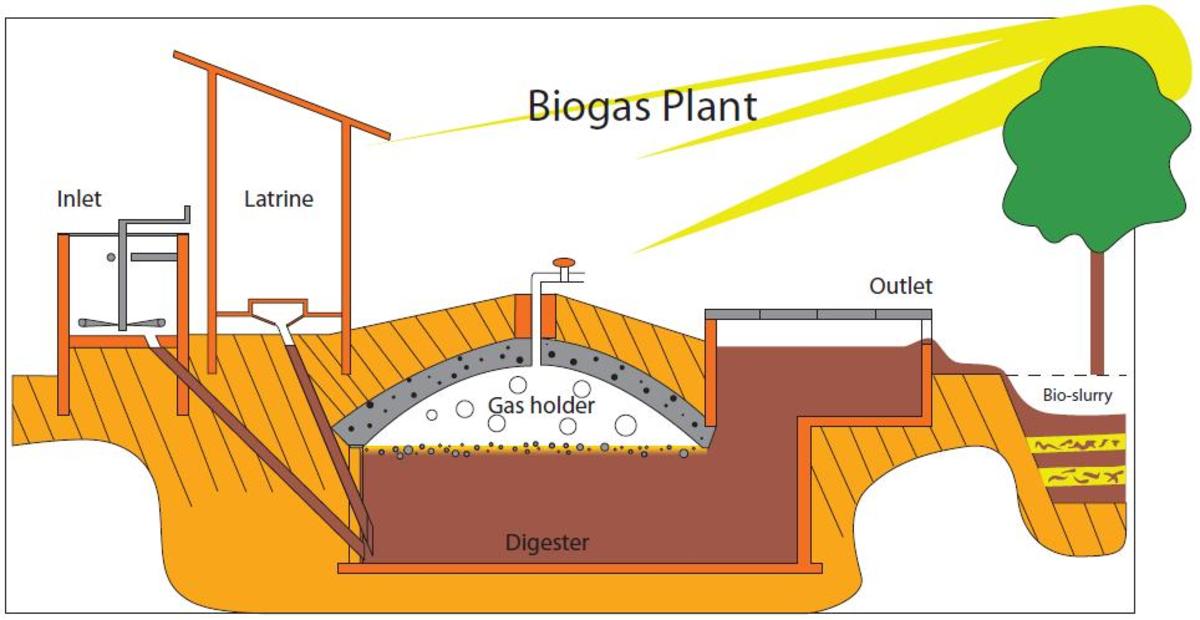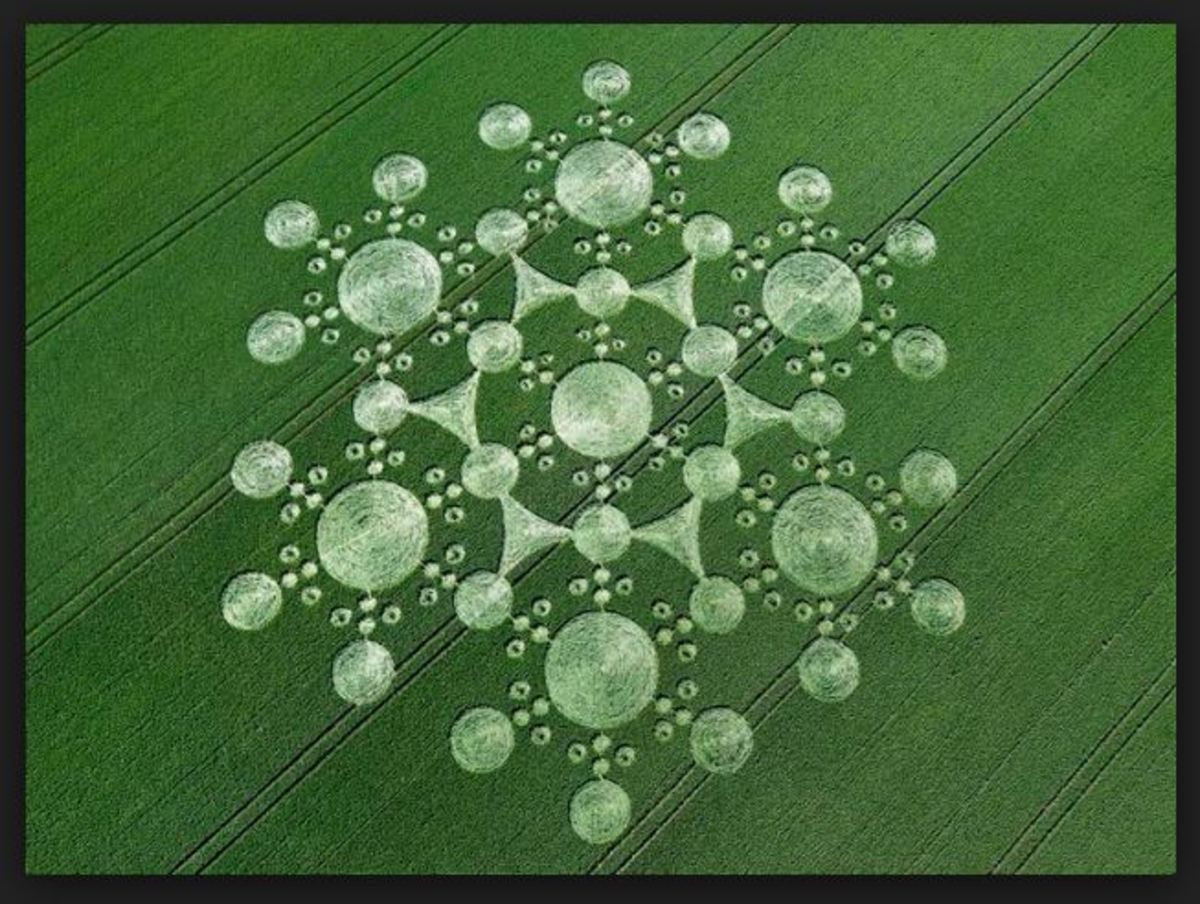How to Get Free Bio-Gas From Your Livestock
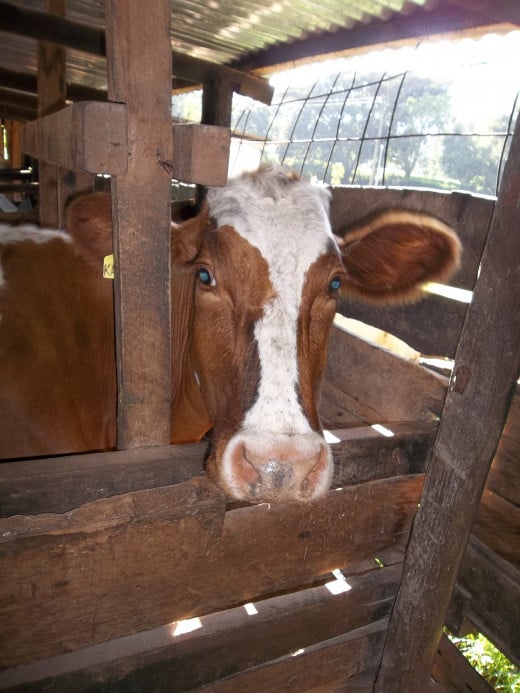
Biogas has Combustible Methane
You probably know several people with more than three cows, and yet they buy LPG gas every time the cylinder runs empty. Cow dung, or dung from any other animal, produces a combustible gas when put in a digester. A digester is really just a container to allow for fermentation. After reading this hub, you will want to advise them that they have so much free methane going to waste that they could save the LPG gas money for other developments. It is important to state from the onset that biogas, which combusts just like LPG gas, is renewable and also odorless. The digester can be put underground to make it inconspicuous and out of the way.
Advantages of a Biogas Project
- When the dung is in the digester, it does not attract flies. Dung usually attracts flies, which lay their eggs in it and proliferate. When you make a habit of putting all the dung produced on your property in the digester, you will also solve the fly problem. Even the slurry, which is the end product, has no odor and will not attract flies. Flies are agents of germs and disease.
- Trees are saved as the need for charcoal and firewood as fuel is minimal or nonexistent after you start using biogas. A biogas project therefore helps to conserve the environment, especially if it is adopted by many people.
- Biogas is a renewable resource. Every time you add dung to the digester, you are assured of more methane. Besides the dung, you can put waste vegetative material in the digester. The slurry end product will be a first-rate fertilizer for your farm. More food and fodder from your farm will keep the cows well-fed to produce more dung for the biogas digester, and the cycle will continue.
Biogas Project at Kitale Museum
The Kitale Museum is in Kenya’s Rift Valley and is one of the facilities of the National Museums of Kenya (NMK). It is situated in Kenya’s foremost breadbasket in the Trans Nzoia district in the Rift Valley. The rift valley produces tons of wheat, maize, potatoes, peas, and other farm products, including milk. According to the curator of the museum, it is due to this unique location that the museum has adopted an ‘agricultural’ attitude towards the role of a museum in society. The visitors are mainly from the surrounding farming areas, and a subject that is related to their mainstay gels well with them. The museum has three adult cows and one calf. These animals produce enough dung for a demonstration biogas project within the museum compound.
There are two kinds of biogas digester designs at the museum:
1. A floating dome
In this design, the dome floats on the dung in the digester. When the dome is full of gas, it rises, and one is able to estimate the amount of gas collected. In most designs, weights such as stones or water are placed on the dome so that the gas will flow under pressure. Weights were not seen in the Kitale design. The methane that is collected is also accompanied by other gases, such as carbon dioxide. This design does not have a gas separation mechanism, and the museum has discontinued its use in favor of the Fixed Dome design.

2. A fixed dome
In this design, the concrete dome is built as part of the digester. Since the rising gas has nothing to push up, it develops more pressure than the floating dome design and does not need to be 'weighted' down with stones or water. The gas pipe is fixed at the top of the dome and connected to a separator chamber. A control valve stops or releases the gas into a separating chamber where the heavier gases, like carbon dioxide, sink to the bottom while the lighter methane gas flows on to the cooker or other equipment that requires the gas.
A fixed dome is more efficient than a floating dome design. The museum has discontinued the practical use of the former, leaving it for training purposes only. The museum staff make their ten o'clock tea with milk from their cows and then cook it with methane gas from the same cows! Methane is a clean, hot blue flame.
Fixed Dome Biogas Design
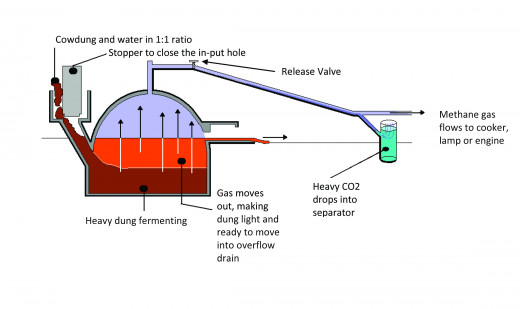
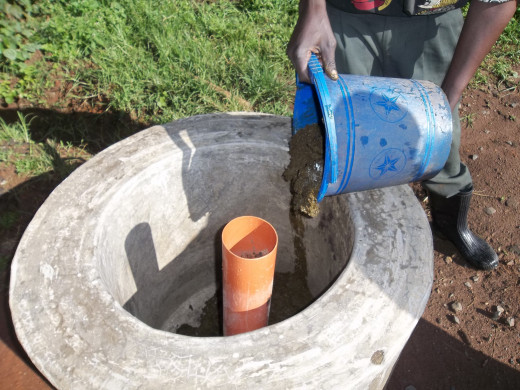
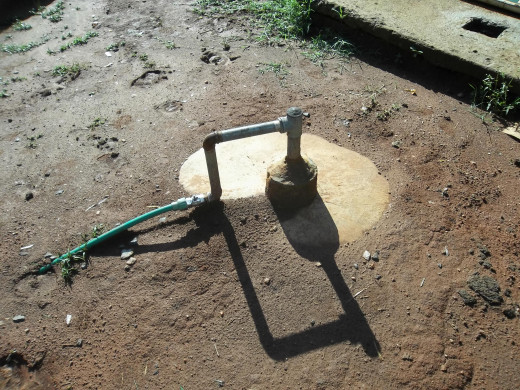
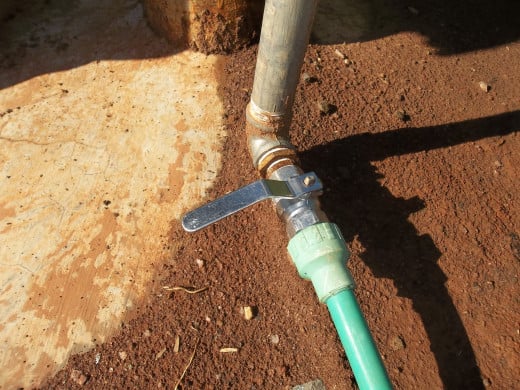
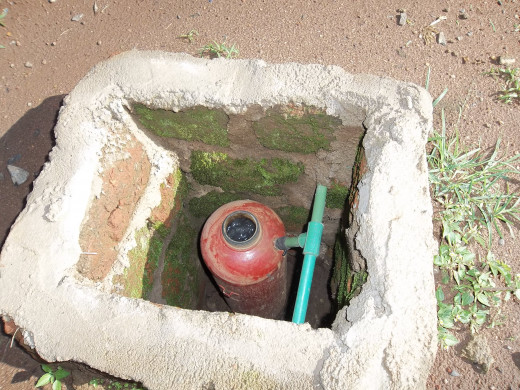
A Happy Biogas User in Kenya
Over to You Now
If cattle are not the common livestock around, you can use dung from any other animal—camels, donkeys, goats, sheep, and even waste from the kitchen. Dung and water are mixed in a ratio of one to one. Once the dung has lost all its biogas, it becomes a slurry that can be used directly on the farm as manure. The design at the Kitale Museum allows the slurry to drain on its own accord into the farm, where it can be distributed by a farmhand.
If you find that your outfit produces more gas and slurry than you can use, perhaps you have business potential there, just waiting to be discovered. In the meantime, stop buying LPG gas if you have animals. If you don't, there are projects by non-governmental organizations (NGO's) to convert human waste into biogas. Imagine the potential that a city has to produce methane gas from all the sewage. The gas can then be sold to the residents at a subsidized rate. What is stopping most people from using human waste is a distaste for the idea. When you are ready, there will be an NGO near you with the expertise to help you realize your dreams.
Other attractions at the Kitale Museum
The biogas project is just one of the many attractions at the Kitale Museum. The facility has a gallery dedicated to the cultural artifacts of the ethnic communities that live side by side. This gallery is invaluable to anthropologists, students, and ordinary people who want to keep abreast of what is fast disappearing in African cultures in the Trans Nzoia.
Next to the cultural artifacts, the museum has a collection of skulls to tell the human origin story.
Most of the communities represented in the region no longer construct traditional huts, but visitors can experience the traditional homesteads of the Luhya, Kalenjin, and Elgon Maasai.
The museum also boasts of a snake park that has other residents besides snakes. These are tortoises and crocodiles. Of interest to other museums that have a snake park is the rabbit and rat breeding section, which is purely to feed the snakes. Other museums usually purchase the rabbits (python food) and rats from private breeders.
The natural setting of the museum allows the visitor to see other non-captive animals, such as the rare white-bearded de Braza monkey.
Botanists and conservationists will find the wide variety of flora, including medicinal plants, quite enthralling.

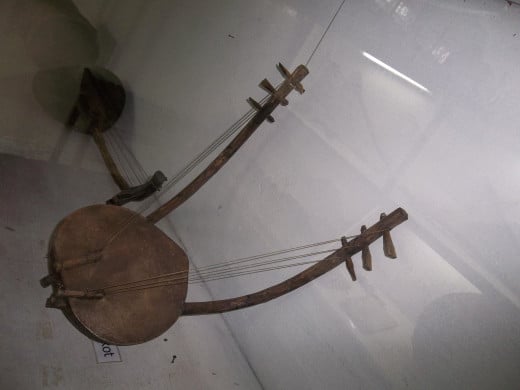
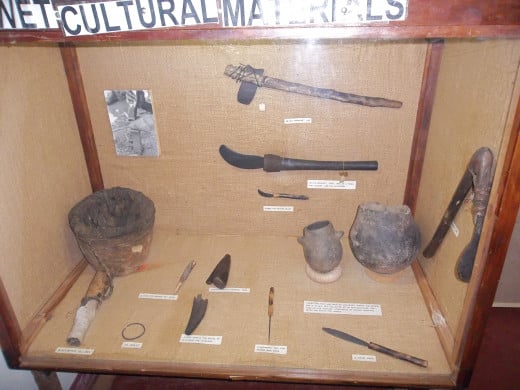

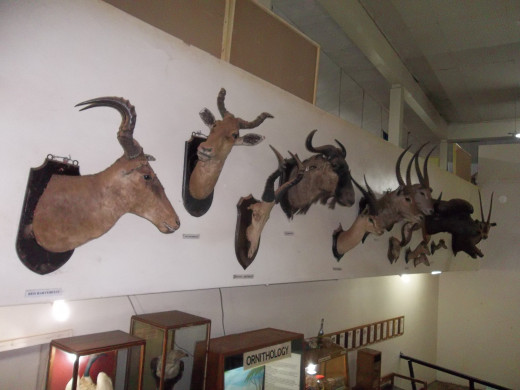
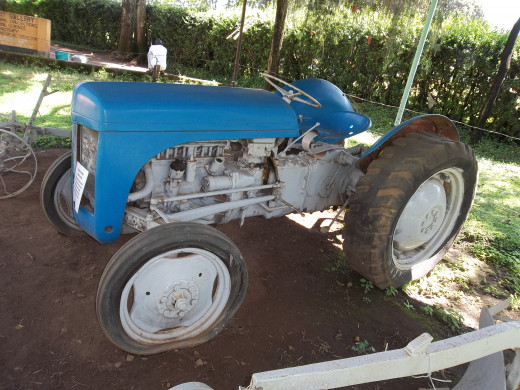
This content is accurate and true to the best of the author’s knowledge and is not meant to substitute for formal and individualized advice from a qualified professional.
© 2013 Emmanuel Kariuki

